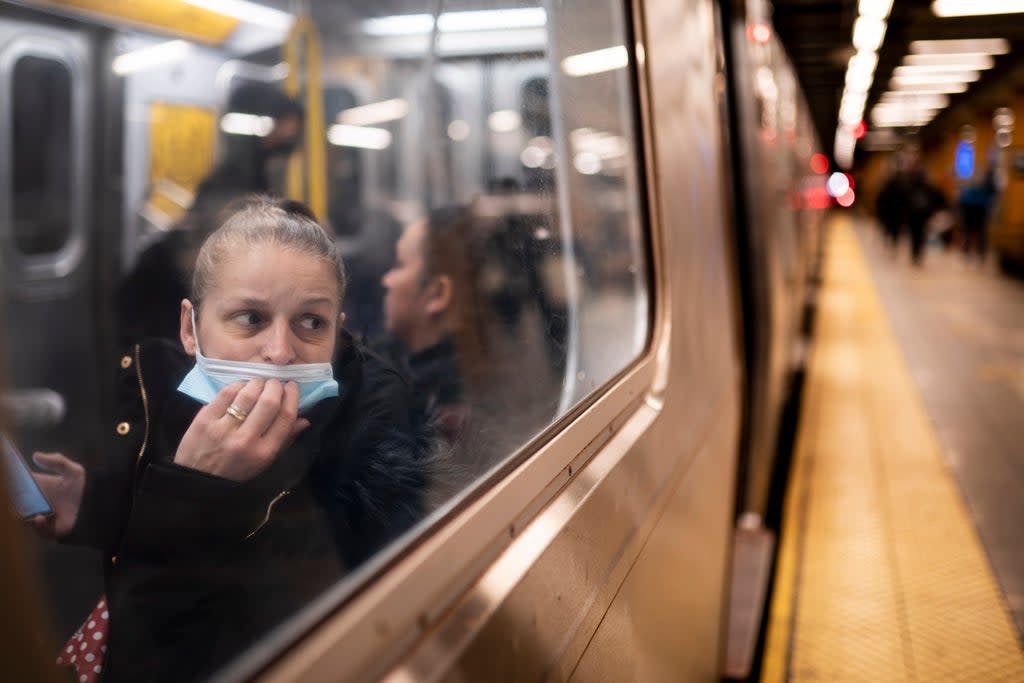For the safety of New Yorkers, it’s time to unlock the subway doors

I’m not the only New Yorker who struggles with subway-phobia.
It began with a gradual reluctance to take trains that go under the East River. It progressed to a preference for the Q – the mother of all trains, in my opinion, which can get me from Park Slope over the Manhattan Bridge to Union Square in just five stops. Eventually I would only ride the Q on its above ground run from Empire Blvd to Brighton Beach (which, yes, I frequent on a regular basis). I began to get vertigo when trapped at odd angles on cars stopped underground due to “congestion”. Rush hour on the platform at Times Square Station was out of the question.
The deal was sealed after the 2017 literal hot mess, when Brooklyn-bound passengers trapped in an F Train, were left sweltering without circulating air for over 40 minutes. In a frantic attempt to cool off, some stripped. Others clawed at windows and tried to pry open the locked doors while platform onlookers took photos of their desperation.
The pandemic didn’t help matters – adding a healthy fear of potential contagion to my list.
Then this: On the morning of 12 April 2022, a mass shooter unleashed two smoke grenades on a Manhattan-bound N train. Donning a gas mask, he shot 33 bullets from a semi-automatic handgun. Passengers jumped over seats, and over each other, in a terrified run for the door – only to find them locked on both ends.
That there were zero fatalities during this horrific shooting was a miracle. Ten passengers were shot and wounded, and 13 riders were treated for smoke inhalation. We’ve seen the photos – the train finally pulling up, the doors opening and the people flooding out in a cloud of smoke.
While some subway cars are unlocked at either end, the older cars lock shut. What could possibly go wrong? Aside from the above case in point, a rapist on the prowl, a fire perhaps, or a random fatal shooting like the one that happened on Sunday 22 May, in the last car of a train crossing the Manhattan Bridge.
The R46 and R68/R68A car classes are 75 feet long and currently run on the A, C, N, Q and W lines. Those are the cars with the quaint orange seats that allow you to face forward and backward. Built in the 1970s and 80s, they are 20 per cent longer than the newer cars. When those longer cars take turns, they swing out more than their stubbier counterparts, creating a wider gap which theoretically might make it easier to fall on the tracks – for those who are inclined to throw common sense out the window (good luck opening it).
According to Sean Butler, media liaison with the Metropolitan Transportation Authority, which runs the subway system, the end doors can be remotely unlocked by the train crew in the event of an emergency. However, the MTA did not provide an answer as to why that failed to happen when the bullets started flying last month on that rush-hour subway train in Brooklyn; nor detail as to how riders might contact crew during such emergency events.
If the MTA is genuinely concerned with reducing the risk of people falling onto tracks, let them hasten the testing – and ultimate installation – of platform barriers, lest more be shoved to an untimely death, or accidentally pushed by an unwitting rush-hour throng. Safety would be greatly served by channeling attention and resources in this direction.
Instances of individuals getting killed riding or walking between subway cars must not be discounted. Such movement is prohibited and all tools, including those drawn from the legal arsenal, should be utilizsed to dissuade this behavior. By all means, keep fines in place for unauthorised movement between cars. But it’s wrong to endanger the vast majority by closing off escape routes.
Alas, I’m not the first genius to propose a plan for potentially life-saving liberation!
In 2010, then-Councilwoman Letitia James took a fright after being locked in a car with her children while a fight broke out. At that time, the MTA locked train doors on the B, D, A, G and R lines. She introduced legislation, demanding the MTA unlock doors between cars on New York City subway trains. Fernando Cabrera, Margaret S Chin, and now-New York City Public Advocate Jumaane D Williams sponsored the bill too. Res 0582-2010 stated: “Whereas, Although the MTA made the decision to lock the end doors of a subway car for the purpose of protecting the public, locking these doors might serve as a detriment to public safety because passengers would not be able to escape in the event of an emergency or any other potentially dangerous situation in which one’s safety might be threatened.”
Unlocking the doors is common sense. Nobody wants to be trapped in an emergency like a third-class passenger sinking on the titanic.
In a period when New York City is experiencing an anemic office presence, clinging to the comforts of working remotely, our financial ecosystem is uncertain and Mayor Eric Adams is admonishing us to come out of our pajamas and get to in-person work.
People are scared. We are living in a climate where one can’t be sure that they won’t get hit from behind with a hammer in the station. One common sense adjustment could go a long way in reducing at least one threat to public safety. It’s time to unlock the subway doors.

